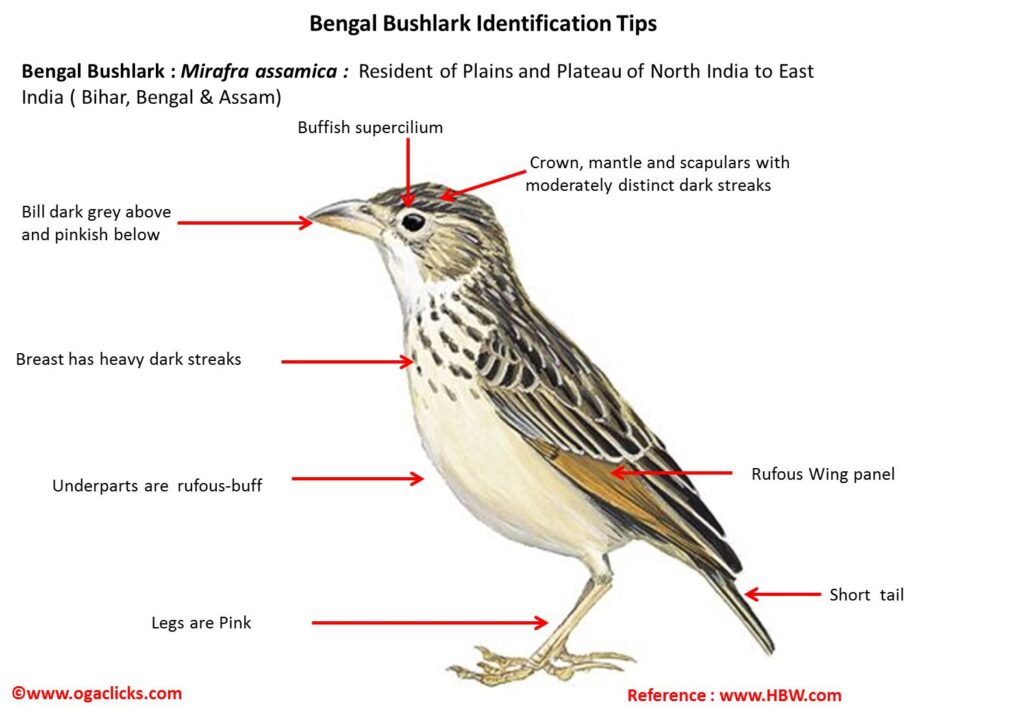
Bengal Bush lark Mirafra assamica
Etymology:
- Mirafra : Latin word mirus wonderful, and Afra from African;
- Assamica : from Assam in India
Vernacular name : Hindi: Aggia, Bangali Aggin, Chirchira, M.P: Leepee, Ben: Bhiriri, Ta: For larks – Vanampadi kuruvi, Te: Eeli jitta, Ta: Vanampadi, Mal: Chempanpati, Sinh: Gomaritta
Distribution : Plains of Northern India
Description : Size of 16 cm. It is a heavy-bodied lark with large bill, short tail , large wings with long legs. It has buffish supercilium (greyish-white when plumage worn); dark brown-grey or grey-brown above. The crown, mantle and scapulars have moderately distinct dark streaks, nape is indistinctly streaked. The wings are dark grey-brown or blackish-brown. The upperwing-coverts and tertials have buffish or rufous-buffish tips and edges, broad rufous edges of primaries forming prominent rufous patch (most noticeable in flight). The tail is dark grey-brown, outer web of outermost rectrix rufous-buff (pale buffish when worn). The underparts are rufous-buff (paler when worn). The breast has moderately heavy dark streaks; iris is brown; bill is dark grey above and pinkish below. The legs are pink. Both the sexes are alike in plumage, female on average smaller. The juvenile differs mainly in showing more extensive and more clear cut dark centres and narrow pale tips on crown, mantle and scapulars.
Habitat: It is found in grassland and fields in plains with scattered bushes and trees. Almost entirely terrestrial.
Food habits: It eats seeds and invertebrates.
Breeding habits: They breed in Mar–Aug. The male has high, undulating, sustained song flight, flies in random “circles”, alternating quick wingbeats with short glides on spread and slightly raised wings and spread tail. The nest is a cup of grass, sometimes domed, in depression on ground. They lay a clutch of 3–4 eggs.